|
Even though it is May, and Spring is fully underway, it snowed in the Chamonix Valley yesterday: 20cm at 1000 metres. And in fact, around Mont Blanc there is still 2.6m of snow at 2500m (around the maximum altitude on the TMB). Now that does not necessarily mean that there are going to be major problems for early season TMB trekkers as warm weather between now and June should bring on a rapid thaw. However, it is fair to say that it is too early to tell and that we are not out of the woods yet. With that in mind, I thought it would be useful to put together a list of places on the TMB where snow can be problematic: a list of snow hotspots, if you like. Now this list will never be exhaustive as conditions vary from year to year: wind directions and microclimatic local conditions have a major impact on exactly where snow will have accumulated at greater depths. Nevertheless, there are some places where typically snow is slower to clear. Furthermore, snow will generally be slowest to clear on north facing slopes. This article is not intended to worry you. Rather it will empower you, helping you to be aware of some key sections which snow makes problematic. Use this information to ask the right questions of the accommodation managers before you set out in the morning: they are likely to know what has been happening on the trail and if walkers have previously been forced to turn back. Remember that it is not the end of the world if you have to avoid a small section of the TMB: it is 174km long so there will still be a huge amount of trail that you can travel safely. So what follows is a list of some of those places, described in an anti-clockwise direction starting in les Houches. The stage numbers referred to are the stage numbers used in my book, Tour du Mont Blanc. 1. Col de Tricot Variant (Stage v1a): the crossing is north to south or vice versa so there can be a great difference in snow pack between the two sides. In particular, take care on the north side of the col. The good news is the col (at 2120m) is not one of the highest so snow does clear earlier here than in other places. Early season hikers should ask about conditions in les Houches before setting out: if in doubt take the main TMB route (Stage 1a) which is much lower. 2. Col de Bonhomme & Col de la Croix de Bonhomme (Stage 2c): take care on the entire section between the northern approach to Col de Bonhomme and Refuge de la Croix de Bonhomme. Altitudes are high and snow lies pretty late. The climb to Col de Bonhomme is steep and north facing so can be slippery in snowy conditions. Also, take great care on the exposed traverse straight after Col de Bonhomme: the slope is steep and a fall could be serious. I felt very happy having an ice axe there in early June last year although few other people were carrying them. After Col de Bonhomme, navigation can be tricky if the path has been obscured by snow. 3. Col des Fours (Stage v2d): the joint-highest place on the TMB. Do not attempt this in snowy conditions. The eastern side is extremely step and if you slip you could slide all the way to the bottom. Navigation would also be a serious undertaking here in snowy conditions. 4. Col de la Seigne (Stage 3b): another high col where snow can lie late. It is not as steep (on either side) as some other cols but still watch your footing: I witnessed a foolish group last year descending in very snowy conditions in tennis shoes with no grip. They were lucky. In a heavy year, snow can remain in June almost all the way from the col to Rifugio Elisabetta. Normally, the route is well tracked by others before you but just take care over your navigation. 5. Combal to Rifugio Maison Vieille (Stage 4b): this balcony path has many traverses with steep drops. In snowy conditions these can be treacherous. You may find that the traverses have been tracked by others but do not follow these footprints slavishly. It is not axiomatic that the people before you have selected the correct and safest crossing. A fall on one of the traverses, which can be icy, could be serious. 6. Rifugio Bertone to Rifugio Bonatti (Stage 5b): a series of streams are crossed on this stage and snow bridges tend to form across them. Take great care crossing snow bridges: if one collapsed with you on it then you could be seriously injured. Again, do not necessarily follow the tracked path. Look for the thickest part of the snow pack to cross. If it look dangerous head up or down stream until you find a safe place to cross. 7. Mont de la Saxe Variant (Stage v5b): avoid this variant in snowy conditions when navigation is tricky. After Tête de la Tronche, snow often lies late into the season. 8. Rifugio Bonatti to Rifugio Elena (Stage 6a and 6b): there are more steep traverses. The comments above apply here also. 9. Rifugio Elena to Grand Col Ferret (Stage 6c): Take care on the entire climb to and descent from the col. In particular, the first part of the climb just after Rifugio Elena is treacherous in snowy conditions. 10. Fenêtre d’Arpette (Stage v8): I will be blunt here: avoid this entirely if there snow still lying. You could die. Navigating the boulder crossings in snowy conditions is for adequately equipped walkers with good winter skills only. 11. Col de Balme (Stage 9b): It is not the highest col so is unlikely to be the worst thing you undertake but take care anyway if snow is lying. 12. Aiguillette des Posettes (Stage 9c): There are steep drops along the ridge and the descent is long and very steep. Avoid this section in snowy conditions and take the safer variant (Stage v9c) instead. 13. Lac Blanc (Stage v10): Snow can remain into early summer. Some of the sections of the approach to the lake are steep: these become slippery and treacherous in the snow. Ask locally before setting out on this variant.
14. Col du Brévent (Stage 11a): the section between Planpraz and le Brévent is very difficult to navigate in snowy conditions. It passes through some remote terrain and it would be easy to get lost. Snow tends to accumulate around the col and can be some of the last snow to melt on the TMB. I was very glad of my ice axe there in mid-June last year. I hope that you found this helpful. If you have any further questions then please post them on the Facebook group “Tour du Mont Blanc”. As regards winter equipment, skills and technique, you could write a whole book on that so it is beyond the scope of this article.
2 Comments
Natasha H
18/7/2021 14:00:05
I used this info extensively on our TMB trip, which we just completed. They had a ton of snowfall this season + an unusually cold May so even though we hiked in early to mid July, snow conditions were unseasonally challenging. This info was very helpful, thanks so much!
Reply
2/3/2023 11:55:41
I can't believe the fact that it snowed at the Chamonix valley in May. My country gets so hot in May, so witnessing snow this month is a dream of mine.
Reply
Your comment will be posted after it is approved.
Leave a Reply. |
Andrew McCluggageblogs about life on the Knife Edge Archives
January 2024
Categories
All
|
|
|
Free UK Delivery
International Delivery also available |
|
|
Company |
Support |
Follow us©Knife Edge Outdoor Guidebooks 2018
|

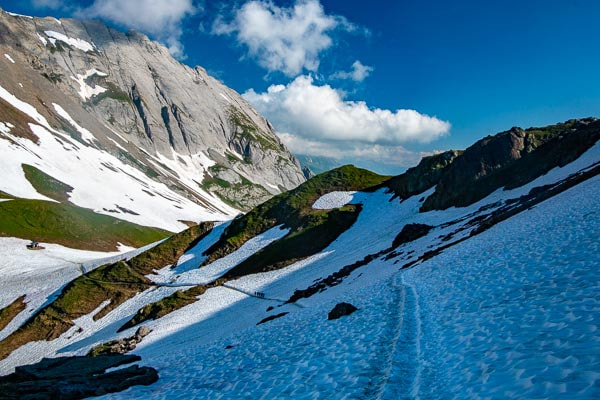
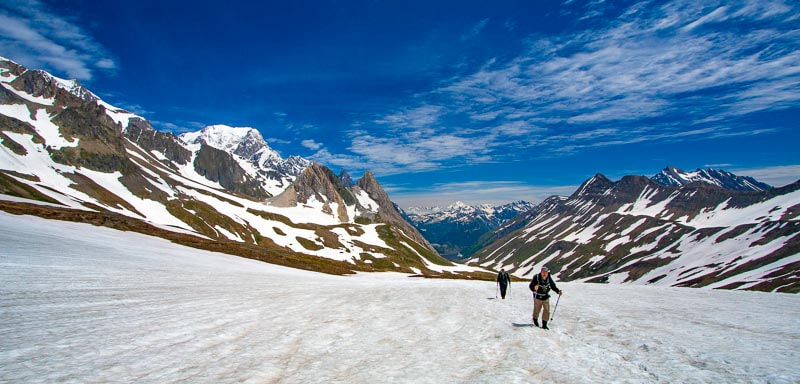
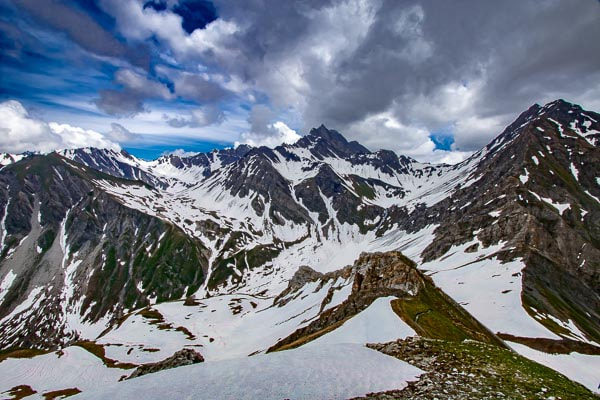
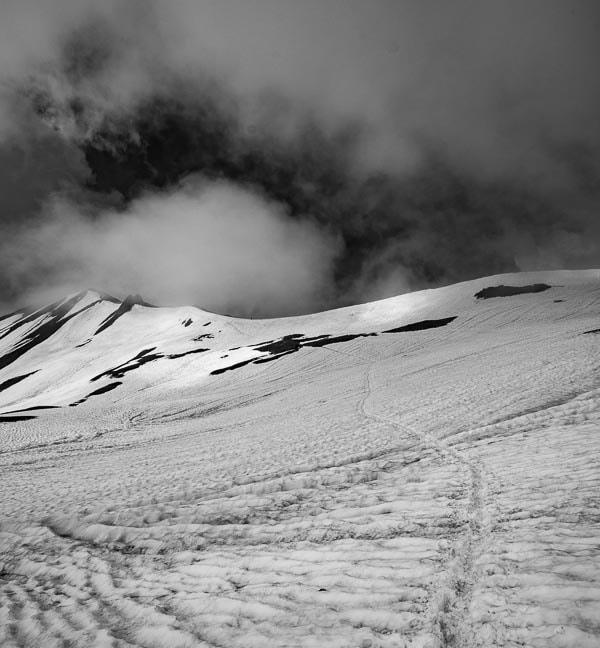
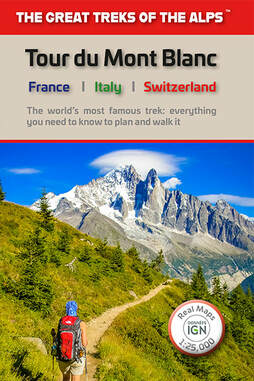
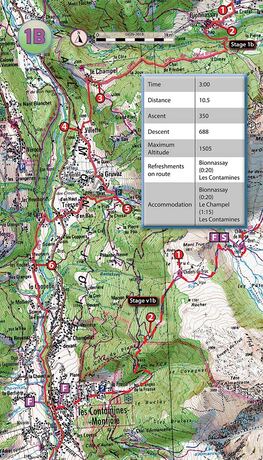
 RSS Feed
RSS Feed
